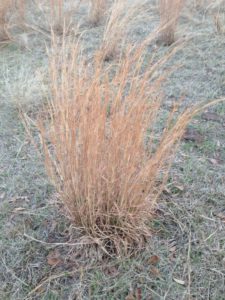Broomsedge Bluestem (Andropogon virginicus L.) is a warm season perennial grass found throughout Central and East Texas. Broomsedge growth begins as temperatures consistently stay above 60 degrees F. It produces many seeds that are distributed by wind. It is a poor competitor, has poor nutritive value for livestock and low palatability. Broomsedge can quickly become the dominant species in over-grazed, low pH (< 5.5), low fertility, eroded soils where desired vegetation will not thrive.
Since this plant thrives on low pH and low fertility soils, soil testing is the first step in managing a broomsedge infested field. Improved soil pH and fertility will shift the competitive edge toward the desirable forage species. This component will take various lengths of time depending on soil test levels. If your budget is limited, the priority should be adjusting the soil pH with lime.
If broomsedge is shading desirable species lower in the canopy, mowing may be necessary to bring in more light. However, neither mowing nor prescribed burning will reduce broomsedge populations. The application of glyphosate during active growth, either as a spot spray or rope wick, can be an effective herbicide option.
Vanessa Corriher-Olson, associate professor, forage Extension specialist
Soil & Crop Sciences, Texas A&M AgriLife Extension, Overton
[email protected]

